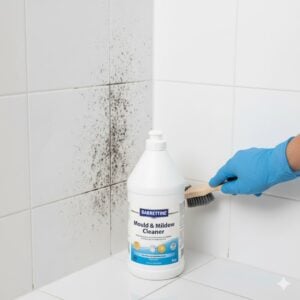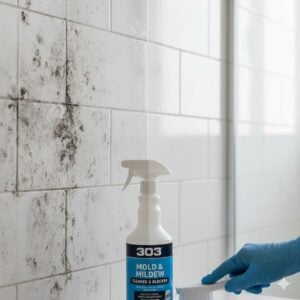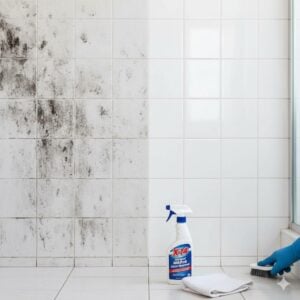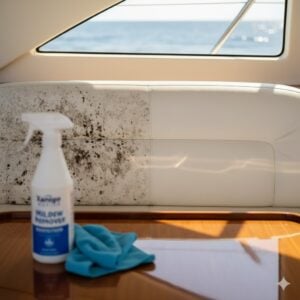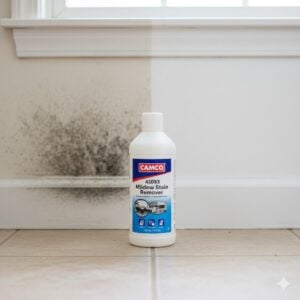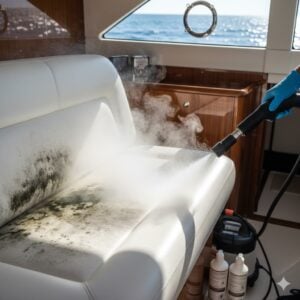Spotting mold in AC can be more than just an annoyance—it’s a red flag for your home’s air quality and your health. Mold in air conditioning units is a sneaky intruder, quietly compromising your living space. Understanding the urgency of addressing this issue is crucial, as it affects not only the efficiency of your AC but also poses significant health risks. That’s why today, we’re diving deep into practical steps you can take to tackle this problem head-on. Join us as we explore four immediate actions to protect your home and ensure a cleaner, healthier environment.
Table of Contents
Toggle#1. Identify the Source
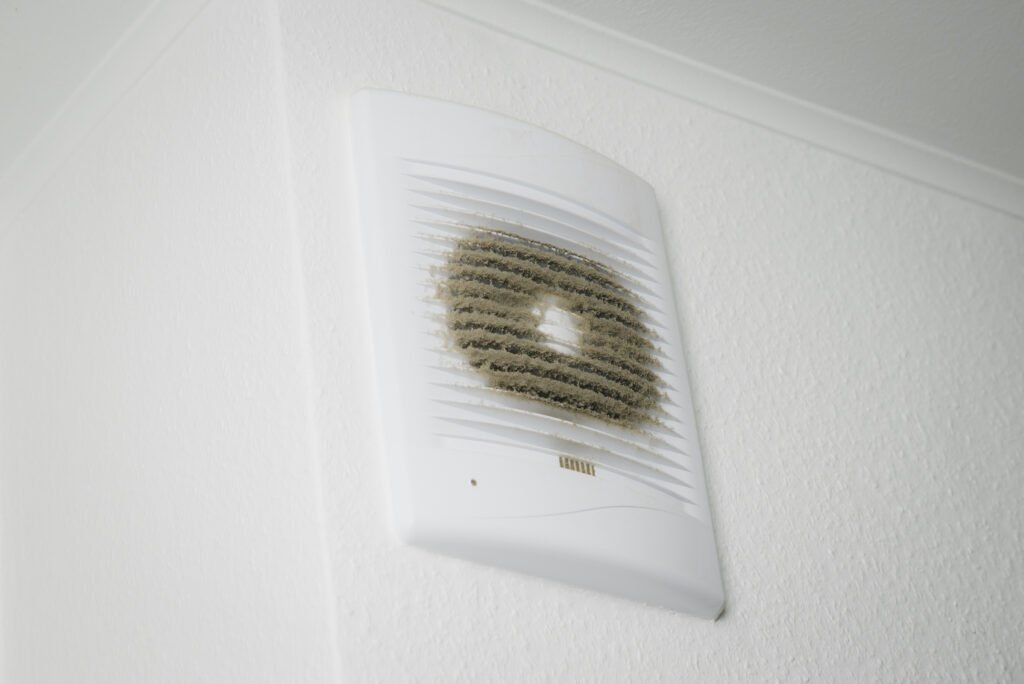
Identifying the source of mold in AC unit is a crucial first step in tackling this problem effectively. Mold thrives in moist, warm environments, and your air conditioning system can provide the perfect conditions for mold growth if not properly maintained. The process begins with a thorough inspection of the AC unit, paying close attention to areas where moisture accumulates or where airflow is restricted.
Firstly, check the drain pans and drain lines. These components can harbor mold if water doesn’t drain properly and stands still for a long time. It’s essential to ensure that the drain lines are clear of obstructions and the drain pans are cleaned regularly to prevent water from pooling.
Secondly, examine the evaporator coils and air filters. The evaporator coils can collect dust and debris, which, when combined with moisture, create an ideal breeding ground for mold. Similarly, air filters can become clogged over time, restricting airflow and causing moisture buildup. Regular cleaning or replacement of air filters and evaporator coils is necessary to prevent mold growth.
Finally, pay attention to ductwork and vents. Leaks or condensation in ductwork can lead to mold growth inside the ducts, affecting the air quality in your home. Inspect the ducts for any signs of moisture or mold and consider having them professionally cleaned if mold is present. Caption for image: “Inspection of AC ductwork for leaks and mold.”
In addition to these specific areas, maintain an overall healthy environment in your home by controlling humidity levels. Use a dehumidifier if needed, especially in areas prone to high humidity. Regular maintenance of your AC unit is not only key to preventing mold but also to ensuring the system operates efficiently, providing clean, fresh air to your living space.
By identifying and addressing these common sources of mold in AC units, you can significantly reduce the risk of mold growth and its potential health risks. Regular checks and maintenance are essential steps in keeping your home safe and comfortable.
#2. Immediate Cleanup
Finding mold in your AC system signals a need for immediate action, not only to protect the machine’s efficiency but also to safeguard your health and air quality. Mold thrives in damp, dark places, making the hidden recesses of your air conditioning unit a perfect breeding ground. The first step in immediate cleanup is to turn off the AC system to prevent spores from being circulated throughout your home during the cleaning process.
- Begin by wearing protective gear, including gloves, a mask, and goggles. This is crucial to avoid direct contact with mold spores, which can be harmful to your health.
- Remove and clean the air filters. If the filters are disposable, replace them with new ones. For reusable filters, wash them in a mixture of warm water and mild detergent, then allow them to dry completely.
- Clean the accessible parts of the AC unit with a solution made from water and a mild detergent. For tougher mold spots, you might need a solution of bleach and water (1 part bleach to 16 parts water). However, use bleach cautiously as it can be corrosive.
- If mold is present within the ductwork, consider hiring professionals. Cleaning ductwork requires specialized equipment and should be handled by experts to prevent the spread of spores.
- After cleaning, use a vacuum with a HEPA filter to clean up any dust and spores around the AC unit. This type of vacuum can trap mold particles that standard vacuums might recirculate into the air.
- Finally, run a dehumidifier in the room or the affected area to remove excess moisture from the air, discouraging further mold growth.
For preventative measures, ensure the cleaned or new filters are dry before reinstalling them, and regularly check for any signs of moisture or mold recurrence. Regular maintenance of the AC unit, including routine cleaning of filters and inspection of ducts, can prevent mold from becoming a problem again.
This methodical approach to cleaning mold from your AC unit not only addresses the immediate issue but also helps in preventing future mold growth. Regularly cleaning and maintaining your AC system is vital for keeping your home’s air clean and safe.
#3. Improve Ventilation and Humidity Control
Improving ventilation and controlling humidity levels are critical steps in preventing mold growth, especially in areas prone to high moisture. Effective ventilation ensures that damp air is expelled from your home, reducing the humidity that mold spores need to thrive. Meanwhile, managing humidity levels can significantly diminish the likelihood of mold establishing itself in your AC system and home.
- Increase Natural Ventilation: Open windows and doors regularly to allow fresh air to circulate throughout your home. This is particularly important in areas like kitchens and bathrooms that generate a lot of moisture. However, be mindful of outdoor humidity levels; avoid opening windows when it’s more humid outside than inside.
- Use Exhaust Fans: Ensure that rooms with high moisture levels, such as bathrooms and kitchens, are equipped with exhaust fans. These fans should vent directly outside, not into attics or crawl spaces, to effectively remove moist air from your home.
- Deploy Dehumidifiers: In regions with high humidity, using dehumidifiers can help maintain indoor humidity levels at the recommended 30-50%. This range significantly reduces the likelihood of mold growth. Portable dehumidifiers are effective in targeted areas, while whole-home systems can provide a comprehensive solution for larger spaces.
- Maintain Your AC Unit: Regularly servicing your AC unit ensures it operates efficiently, reducing humidity levels and improving air circulation. Clean or replace the air filters monthly during peak usage periods to promote better airflow and prevent dust and mold spores from circulating.
- Consider a Heat Recovery Ventilator (HRV): For homes in cooler climates, an HRV can introduce fresh air while retaining pre-conditioned heating or cooling. This system exchanges stale, humid indoor air with fresh outdoor air, maintaining comfortable humidity levels without a significant increase in energy costs.
- Inspect and Repair Leaks: Water leaks from pipes, roofs, or around windows can increase indoor humidity and encourage mold growth. Regular inspections and prompt repairs of any leaks are essential to keep moisture levels in check.
By implementing these strategies, you can significantly reduce the risk of mold growth in your home and AC system. Adequate ventilation, coupled with effective humidity control, creates a less hospitable environment for mold, ensuring your indoor air remains healthy and fresh.
#4. Regular Maintenance and Inspection

Regular maintenance and inspection of your air conditioning system are indispensable practices to prevent mold growth and ensure the unit operates at peak efficiency. A well-maintained AC unit not only circulates clean, fresh air but also maintains optimal humidity levels, which are crucial in thwarting mold proliferation.
The cornerstone of effective AC maintenance involves a thorough inspection and cleaning of various components:
- Air Filters: The first line of defense against mold is to check and replace the air filters regularly. Dirty filters can restrict airflow and harbor mold spores. Depending on your AC unit and the air quality in your home, filters should be replaced or cleaned every 1-3 months.
- Drain Pans and Drain Lines: These components are prone to moisture accumulation, making them ideal spots for mold growth. Inspect and clean the drain pans and flush the drain lines periodically to ensure they are clear of debris and flowing freely. An annual inspection is typically sufficient, but in areas of high usage, more frequent checks may be necessary.
- Coils and Fins: The evaporator and condenser coils can collect dust and debris, which can lead to mold growth if moisture is present. Use a coil cleaner to remove any buildup and inspect the fins for any signs of damage or bending. Straighten any bent fins with a fin comb to maintain efficient airflow.
- Ductwork: While not directly part of the AC unit, the ductwork is essential for transporting cooled air throughout your home. Leaky or dirty ducts can harbor mold and distribute it through your home. It’s advisable to have a professional inspect and clean your ductwork every few years or more often if you notice signs of mold or mildew.
- Overall System Performance: Beyond cleaning, it’s vital to ensure that your AC unit is functioning correctly. This includes verifying that it effectively cools your home and maintains proper humidity levels. An annual professional inspection can identify any potential issues before they become major problems.
By adhering to a regular maintenance schedule, you can significantly reduce the risk of mold growth within your AC system and ensure it continues to provide clean, healthy air for your home. Regular upkeep not only prevents mold but also extends the life of your AC unit and improves its efficiency, saving you money on energy bills and potential costly repairs.
#5. Use Mold-Inhibiting Products
Mold-inhibiting products play a crucial role in preventing mold growth within AC units. These products typically contain ingredients specifically formulated to inhibit the growth of mold and mildew. Here’s a breakdown of how to effectively utilize these products:
- Understanding Mold-Inhibiting Products: Before selecting a product, it’s essential to understand the different types available. This includes sprays, coatings, and treatments designed specifically for HVAC systems. Each type may have specific application methods and considerations.
- Choosing the Right Product: Consider factors such as the severity of mold infestation, the type of HVAC system, and any pre-existing conditions such as allergies. Select a product that is safe for use within HVAC systems and effective against mold and mildew.
- Application Methods: Follow the manufacturer’s instructions carefully when applying mold-inhibiting products. This may involve spraying, brushing, or coating surfaces within the AC unit. Ensure thorough coverage of all susceptible areas where mold growth may occur.
- Safety Precautions: Wear appropriate personal protective equipment (PPE) such as gloves and a mask when applying mold-inhibiting products. Ensure proper ventilation during application to prevent inhalation of fumes or overspray.
- Frequency of Application: Some products may require regular reapplication to maintain effectiveness. Follow the recommended schedule provided by the manufacturer to ensure ongoing protection against mold growth.
- Compatibility with HVAC Components: Ensure that the mold-inhibiting product is compatible with the materials used in the HVAC system to avoid any damage or adverse reactions. Consult with a professional if uncertain about compatibility.
- Monitoring and Maintenance: Regularly monitor the AC unit for any signs of mold growth despite the use of mold-inhibiting products. Address any issues promptly and consider adjustments to the maintenance schedule or product selection if necessary.
By incorporating mold-inhibiting products into your maintenance routine, you can effectively mitigate the risk of mold growth within your AC unit, ensuring optimal performance and indoor air quality.
#6. Professional Evaluation and Remediation
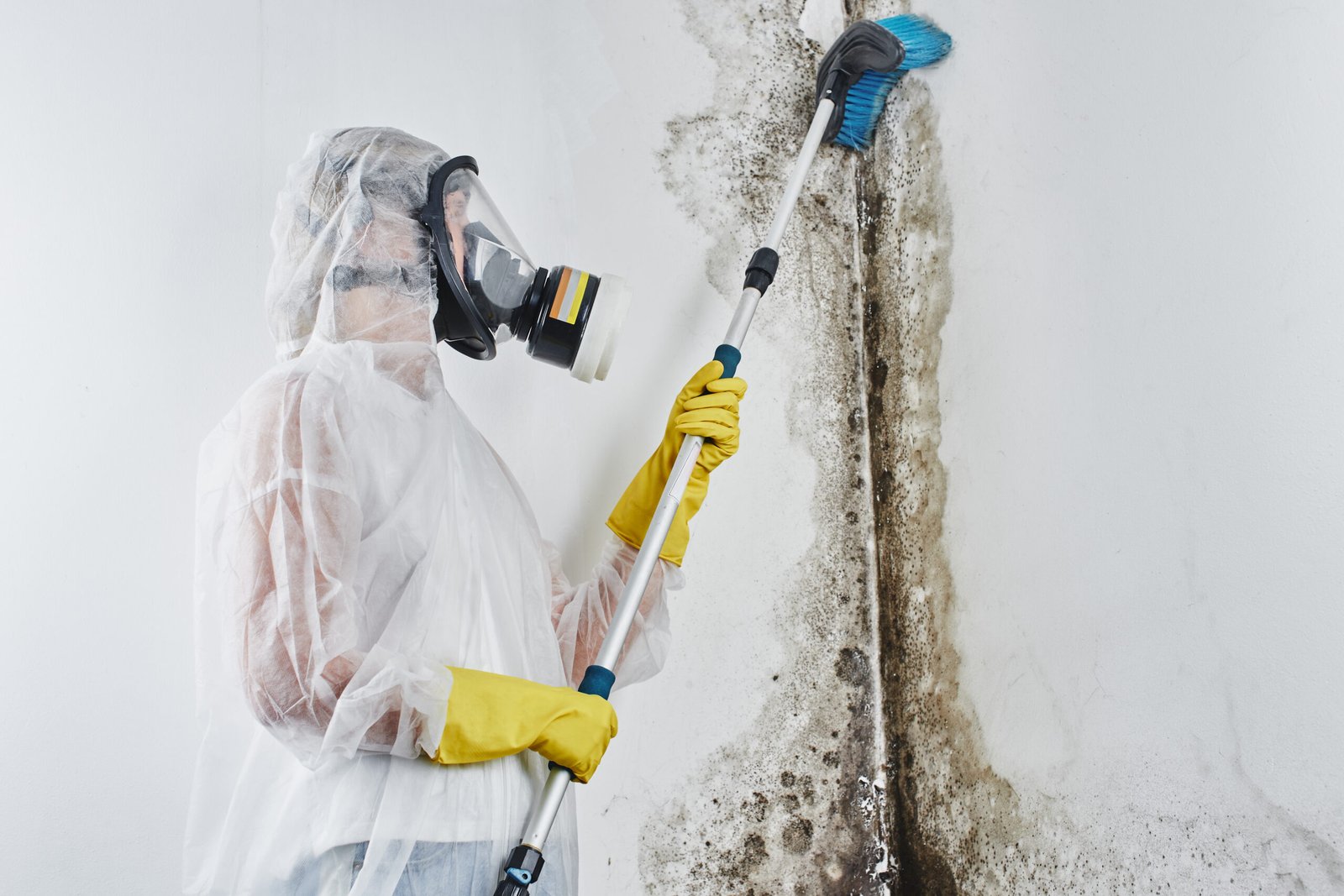
Professional evaluation and remediation are crucial steps when mold growth in AC units is extensive or recurring. Here’s a detailed explanation of this process:
- Assessment of Mold Infestation: Trained professionals conduct a comprehensive assessment to determine the extent of mold growth within the AC unit and surrounding areas. This may involve visual inspection, moisture testing, and air sampling to identify the type and quantity of mold present.
- Identification of Underlying Issues: Professionals investigate the root cause of mold growth, which could range from poor ventilation to underlying moisture problems within the HVAC system. Identifying and addressing these issues is essential to prevent future mold recurrence.
- Development of Remediation Plan: Based on the assessment findings, professionals develop a customized remediation plan tailored to the specific situation. This plan outlines the necessary steps and strategies for safely removing mold and restoring the AC unit to a clean and healthy state.
- Containment Measures: During remediation, professionals implement containment measures to prevent the spread of mold spores to unaffected areas of the property. This may involve sealing off contaminated areas and using negative air pressure to contain airborne mold particles.
- Safe Removal of Mold: Trained technicians utilize specialized equipment and techniques to safely remove mold from the AC unit and surrounding components. This process may include HEPA vacuuming, surface cleaning, and the use of antimicrobial agents to inhibit mold growth.
- Repair and Restoration: In addition to mold removal, professionals address any damage to the AC unit or building materials caused by mold growth. This may involve repairing leaks, replacing damaged insulation, and restoring affected surfaces to their pre-contamination condition.
- Post-Remediation Verification: Once remediation is complete, professionals conduct post-remediation verification to ensure that mold levels have been effectively reduced to safe levels. This may involve retesting air and surface samples to confirm the success of the remediation efforts.
By enlisting the services of experienced professionals for mold evaluation and remediation, homeowners can effectively address mold issues in their AC units and ensure a healthy indoor environment.
#7. Educate Yourself on Mold Prevention
Educating yourself on mold prevention is essential for maintaining a healthy indoor environment and prolonging the effectiveness of AC units. Here’s a detailed explanation of how to educate yourself on mold prevention:
- Understanding Mold Growth Conditions: Learn about the environmental factors that contribute to mold growth, such as high humidity, poor ventilation, and moisture accumulation. By understanding these conditions, homeowners can take proactive measures to prevent mold growth before it becomes a problem.
- Identifying Common Mold Prone Areas: Familiarize yourself with common areas within AC units and the home where mold is likely to thrive. These include damp or poorly ventilated spaces such as basements, bathrooms, and around HVAC components. Regular inspection of these areas can help detect mold growth early.
- Learning Effective Cleaning Techniques: Educate yourself on proper cleaning techniques for preventing mold growth. This includes using mold-inhibiting cleaners, regularly cleaning and disinfecting AC unit components, and promptly addressing any leaks or water damage.
- Promoting Good Ventilation Practices: Understand the importance of proper ventilation in preventing mold growth. Encourage airflow throughout the home by using exhaust fans, opening windows when weather permits, and ensuring that air vents are unobstructed.
- Managing Indoor Humidity Levels: Learn how to maintain indoor humidity levels within the recommended range (typically between 30% to 60%) to discourage mold growth. This may involve using dehumidifiers, repairing leaks promptly, and using exhaust fans in moisture-prone areas.
- Implementing Regular Maintenance Routine: Establish a regular maintenance routine for your AC unit and home to prevent mold growth. This includes inspecting and cleaning AC filters, checking for leaks or condensation around the unit, and scheduling professional HVAC maintenance as needed.
- Making Lifestyle Changes: Adopt simple lifestyle changes to reduce the risk of mold growth, such as avoiding overwatering indoor plants, using moisture-resistant materials in renovation projects, and promptly addressing any water leaks or spills.
By educating themselves on mold prevention strategies and implementing proactive measures, homeowners can effectively reduce the risk of mold growth in their AC units and maintain a healthy indoor environment for themselves and their families.
Why Bio On is Your Go-To Solution Mold in AC
Bio-On offers comprehensive mold remediation and deep cleaning services tailored to your needs. Our team of experienced professionals conducts thorough evaluations, implements effective remediation plans, and provides ongoing support to ensure a mold-free environment. With cutting-edge technology and eco-friendly practices, we deliver safe and efficient solutions for mold prevention and removal. Trust Bio-On to protect your home and health with our proven expertise and commitment to excellence.
Conclusion
Addressing mold in AC units is crucial for maintaining a healthy indoor environment and ensuring optimal system performance. By following the actionable steps outlined, including identifying mold, immediate cleanup, improving ventilation, regular maintenance, using mold-inhibiting products, seeking professional evaluation, and educating oneself on prevention, homeowners can effectively mitigate mold issues. For expert guidance and assistance, contact the Bio-On team today via WhatsApp for a free consultation. Take proactive steps towards mold prevention and safeguard your home and health with Bio-On’s trusted solutions.








